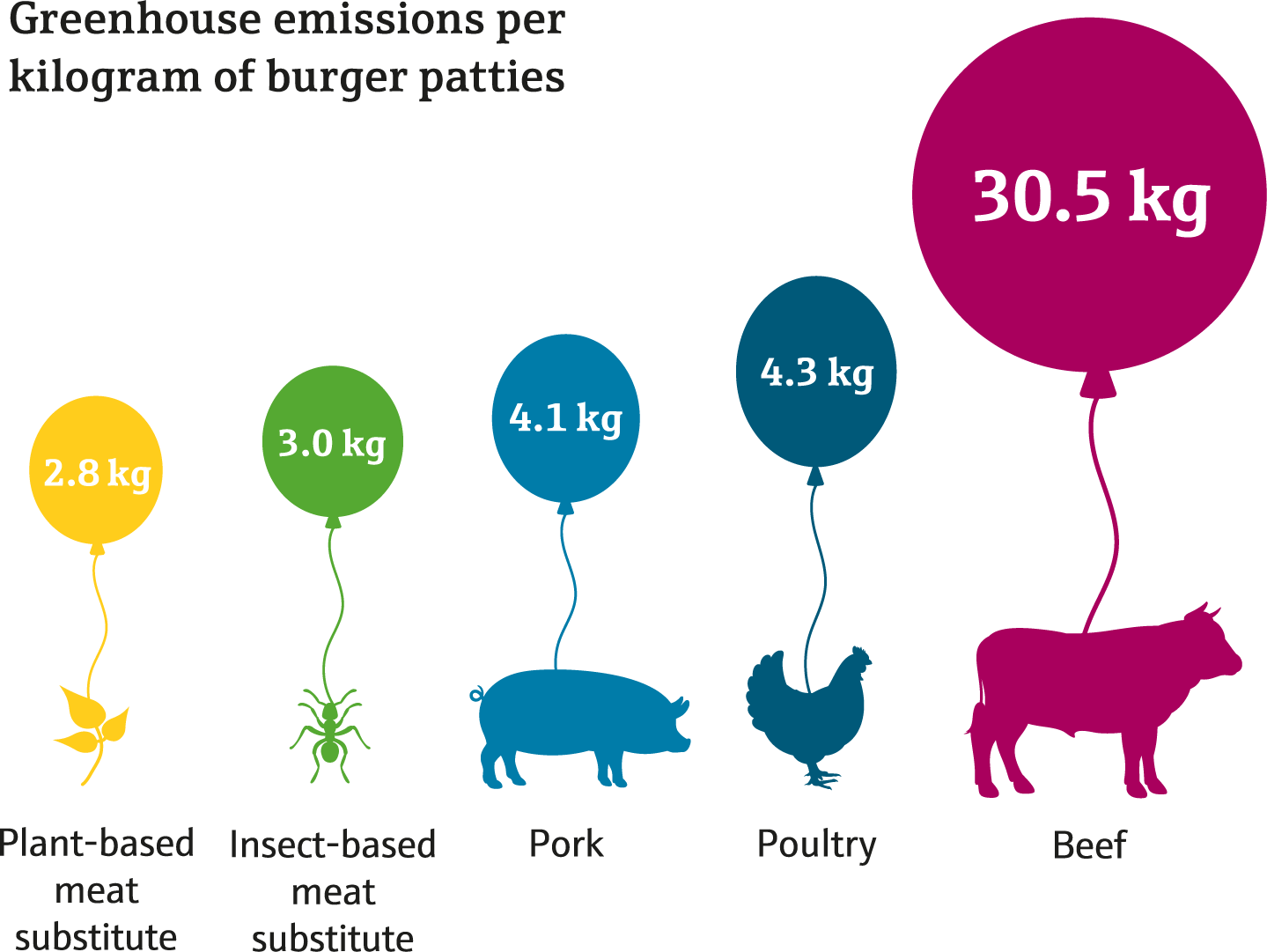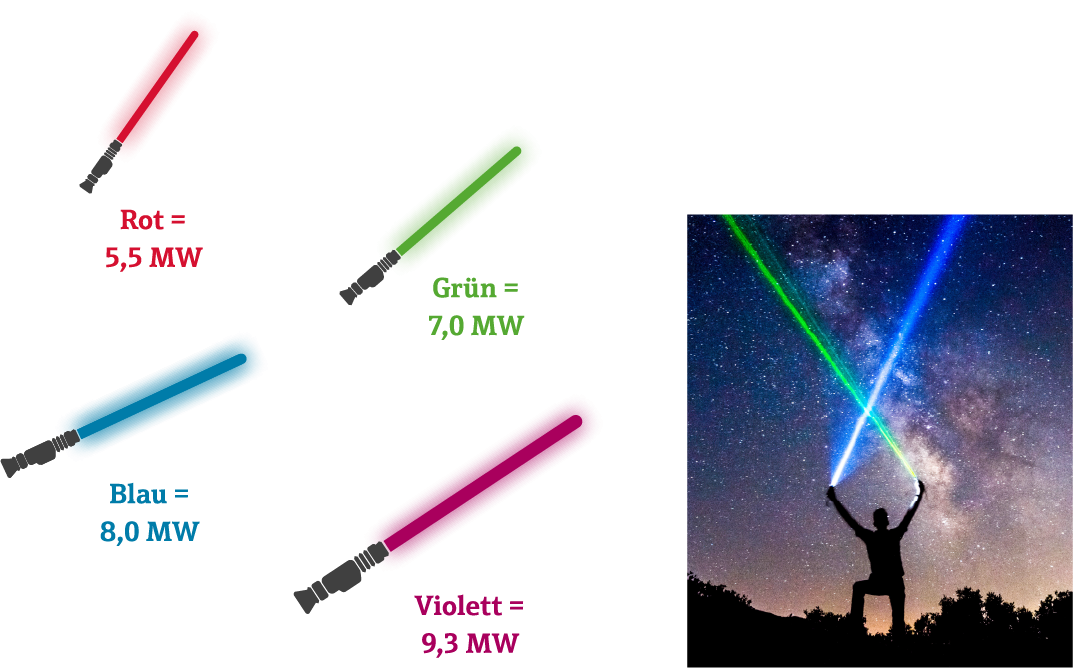Adaptable
Before we turn to industry’s climate-friendly solutions, we’d like to address a few questions. How much renewable energy is available to
us? What does our diet have to do with the energy transition? And finally, can lightsabers help?

more energy than humans use annually – that's how much the sun supplies in one year. That equates to 1.5×1018 kWh. For the future supply of energy, it appears to be enough.
Computing power
While artificial intelligence and digitalization are touted as helping the drive to save energy and every gram of CO2, the technology itself actually has a considerable footprint. Internet surfing, together with all the computers in use – from manufacture to disposal – is responsible for 2 to 4 percent of CO2 emissions worldwide. That’s more than the amount caused by all air traffic. Roughly 80 percent of the energy used by the internet is attributable to video streaming alone.
Our growing personal demand for energy
As hunters, gatherers and fishers, humans used three to six times the basal metabolic rate (3 kWh) as fuel, mostly as energy for feeding themselves, for clothing and
in the form of wood.
![]()
In the agrarian society (in cooler latitudes), that value grew to between 18 and 24 times the basal metabolic rate with the addition of domestic animals and field laborers.
![]()
In industrial countries, a human uses 80 times the average basal metabolic rate, above all for fossil fuels. In parts of India or Africa, where heating is rarely required, every human uses around 20 kWh of energy per day. In China the figure is 75 kWh and in the US, roughly 220 kWh per day.

2,034,065 kilometers
that’s the impressive total length of the world’s pipeline network, according to GlobalData. It is a system that would wrap nearly 51 times around the equator. More than half of that is attributable to natural gas pipelines, in addition to others carrying crude oil and natural gas liquids. The high-voltage grid, which is set to become more important still as electrification increases, measures roughly 5.5 million electrical circuit kilometers (multiple phases are factored in). Both figures will likely see significant growth due to the worldwide energy transition.

Full of energy
Why hydrogen is considered a promising source of energy can be illustrated by comparing heat values. Chocolate is likely to remain the top source of fuel for humans.
“I’d put my money on the sun and solar energy. What a source of power! I hope we don’t have to wait until oil and coal run out before we tackle that.”
Thomas Alva Edison, with a prescient warning, 1931
Flash of inspiration?
Why capture just the sun and wind? How about lightning? It shoots tens of millions of volts groundward, momentarily reaching hundreds of thousands of amps. Great idea, right? Not quite… Peak voltage occurs shortly before the lightning bolt unleashes and dissipates an awful lot of power on its way down, whereby the ground absorbs just 16 kilowatt hours of energy as heat. Convert that at European electricity rates, and it would fetch less than one euro.
Leaving a good taste
The human diet’s role in protecting the climate is a highly debated topic. There is much to suggest that vegan diets offer great leverage in reducing energy use by agriculture and in diminishing personal CO2 footprints. This becomes readily apparent when you compare a burger made with beef to other alternatives.


Powerful lightsabers, the good have
If people in a galaxy far, far away ever really encounter Master Yoda and his ilk, one question has already been answered: which lightsaber from Star Wars is the most powerful in terms of energy? A student at England’s University of Leicester ran the numbers – and the results are reassuring. The red lightsabers wielded by the evil Star Wars characters are weaker than the green, blue or violet ones brandished by the good guys.
Published 01.01.2022, last updated 21.06.2022.
Dive into the world of the process industry through new exciting stories every month with our «changes» newsletter!









